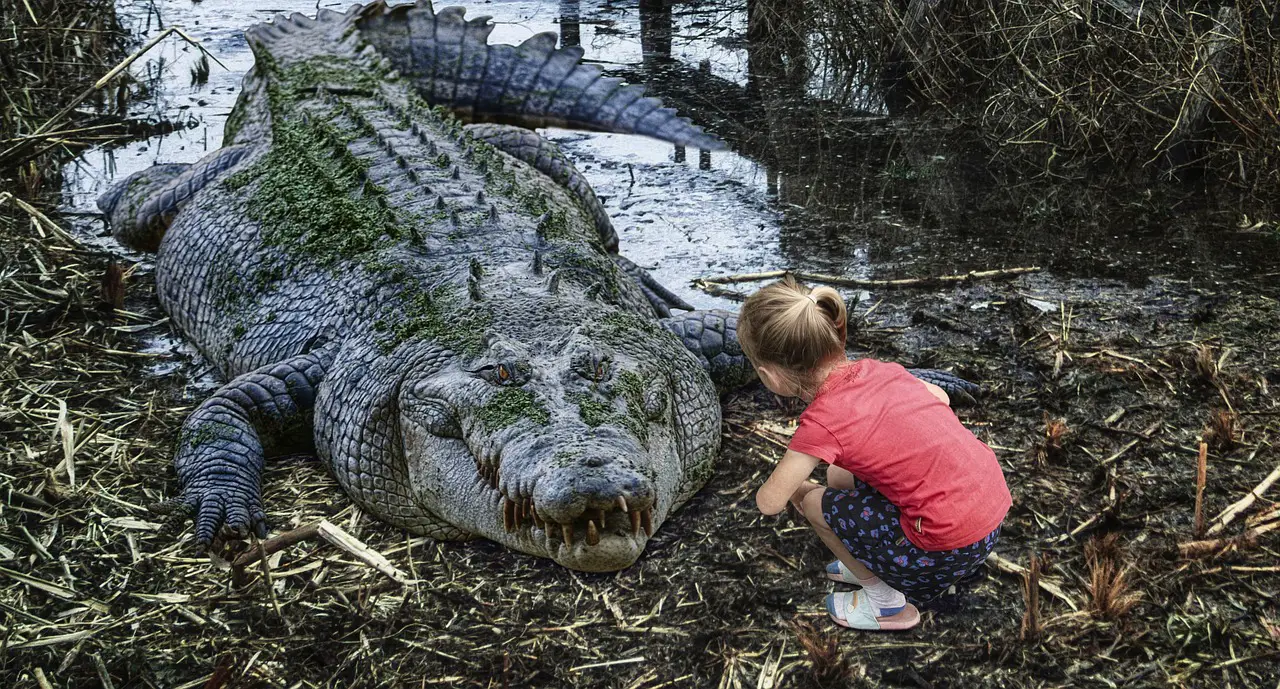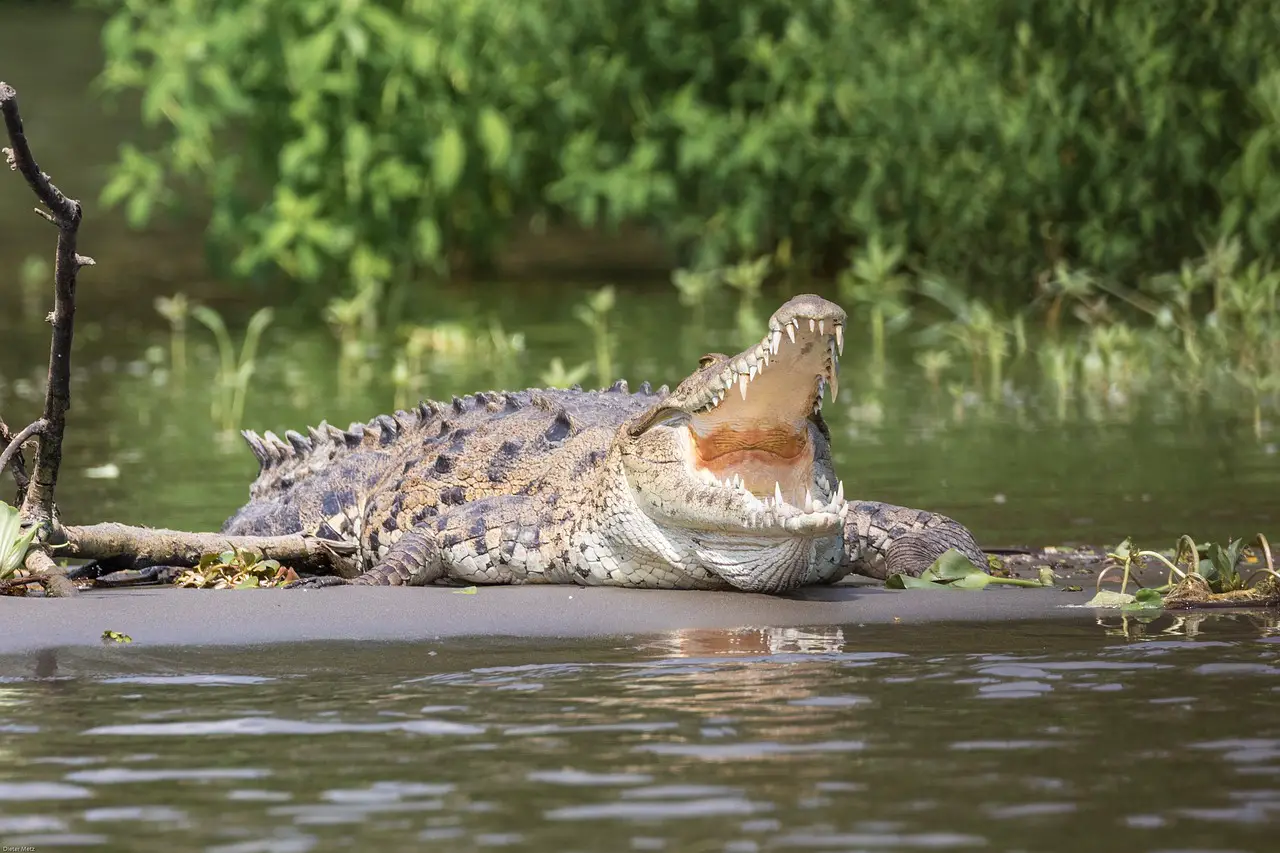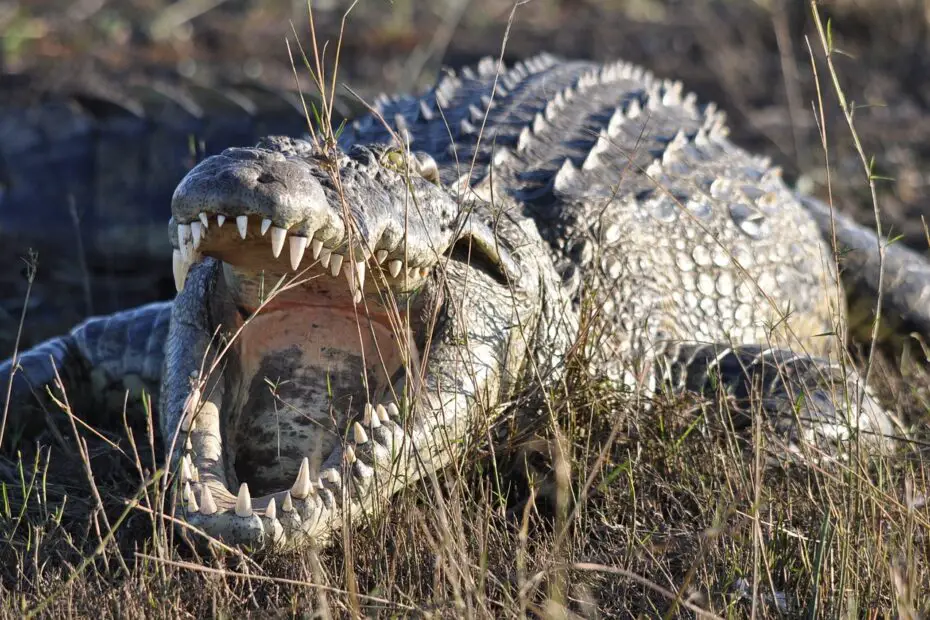Crocodiles are one of the most fearsome creatures on Earth, evoking both awe and fear in people who encounter a big crocodile. Among these magnificent reptiles, the big crocodile stands out as a true marvel of nature. In this article, we will explore the world of big crocodiles, delving into their physical characteristics, habitat, feeding habits, reproduction, threats, and conservation. Join us on this journey to discover the intriguing facts about these ancient predators.
You may also want to read about the top 8 apex predators.
1. Introduction to Big Crocodiles
Crocodiles are reptiles that have roamed the Earth for millions of years. They are known for their long, muscular bodies, powerful jaws, and thick scaly skin. Big crocodiles belong to various species, including the Nile crocodile, saltwater crocodile, and American crocodile. These formidable creatures have adapted to diverse habitats, making them one of nature’s most successful predators.

2. Physical Characteristics of Big Crocodiles
Big crocodiles are distinguished by their impressive size and robust build. They can grow up to several meters in length and weigh hundreds of kilograms. Their bodies are covered in rough, armored skin, which provides protection and aids in temperature regulation. These reptiles have long, muscular tails and powerful jaws filled with sharp teeth, perfectly adapted for capturing and subduing prey.
3. Habitat and Distribution of Big Crocodiles
Big crocodiles inhabit a wide range of environments, including rivers, lakes, swamps, and estuaries. They are found in tropical and subtropical regions around the world. The Nile crocodile, for example, is prevalent in the rivers and marshlands of sub-Saharan Africa, while the saltwater crocodile thrives in the coastal areas of Southeast Asia and Australia. American crocodiles can be found in freshwater habitats in the Americas.
4. Feeding Habits and Diet of Big Crocodiles
Big crocodiles are apex predators and have an opportunistic feeding behavior. They are skilled hunters, ambushing their prey with stealth and precision. Their diet primarily consists of fish, mammals, birds, and reptiles. These cunning creatures lie in wait near the water’s edge, striking swiftly to catch their unsuspecting prey. They have a unique feeding technique where they use their strong jaws to seize their victims and drag them into the water to drown.
5. Reproduction and Life Cycle of Big Crocodiles
The reproductive cycle of big crocodiles is a fascinating process. They typically mate during the breeding season, which varies depending on the species and the geographic region. Female crocodiles construct nests made of vegetation and soil near the water’s edge to lay their eggs. After an incubation period, the hatchlings emerge and make their way to the water, where they face numerous challenges as they grow and develop.
6. Threats and Conservation of Big Crocodiles
Despite their powerful presence, big crocodiles face numerous threats in the modern world. Habitat loss, illegal hunting, and pollution pose significant challenges to their survival. However, conservation efforts and strict regulations have helped protect these magnificent creatures. National parks, reserves, and sanctuaries have been established to safeguard their habitats and promote sustainable coexistence with humans.
7. Interactions with Humans
Interactions between big crocodiles and humans can be both awe-inspiring and dangerous. While these reptiles have an important ecological role, conflicts arise when they come into close proximity with human settlements. Incidents of crocodile attacks have occurred, especially in areas where humans encroach upon their natural habitats. Proper education, awareness, and responsible management are crucial to ensuring peaceful coexistence.

8. Famous Big Crocodiles in History
Throughout history, certain big crocodiles have gained notoriety due to their size, longevity, or legendary status. Gustave, a massive Nile crocodile rumored to have claimed over 300 human lives, gained worldwide attention. Lolong, a saltwater crocodile, held the title of the largest captive crocodile until his passing. These remarkable individuals serve as reminders of the sheer power and majesty of big crocodiles.
9. Cultural Significance of Big Crocodiles
In many cultures around the world, big crocodiles hold significant symbolic value. They are revered as gods or revered figures in various mythologies and belief systems. Indigenous communities often have stories and rituals associated with crocodiles, highlighting their importance in the cultural fabric of certain societies. Art, literature, and folklore have all been influenced by the captivating allure of these mighty reptiles.
10. Fascinating Facts about Big Crocodiles
Here are some intriguing facts about big crocodiles:
- Big crocodiles can survive for extended periods without food.
- They have a remarkable ability to regulate their body temperature.
- Crocodiles have one of the strongest bite forces in the animal kingdom.
- Some crocodile species are known for their spectacular leaping abilities.
- Crocodiles communicate through vocalizations and body language.
Conclusion
In conclusion, big crocodiles are awe-inspiring creatures that have captivated human fascination for centuries. With their remarkable physical characteristics, adaptability, and predatory prowess, they have become icons of the natural world. However, the conservation of these magnificent reptiles is crucial to ensuring their continued existence. By promoting awareness, responsible management, and conservation efforts, we can protect these majestic creatures for future generations to admire.
FAQs
- Are crocodiles and alligators the same?
- No, they belong to different families of reptiles, although they share similarities.
- Can crocodiles run fast on land?
- While crocodiles are not built for speed on land, they can move quickly when necessary.
- Are big crocodiles dangerous to humans?
- Big crocodiles can be dangerous if humans enter their territory or provoke them.
- Do crocodiles have any natural predators?
- Adult crocodiles have few natural predators, but their eggs and hatchlings may fall prey to various animals.
- What is the largest species of crocodile?
- The saltwater crocodile holds the title for being the largest species of crocodile, capable of reaching impressive sizes.
